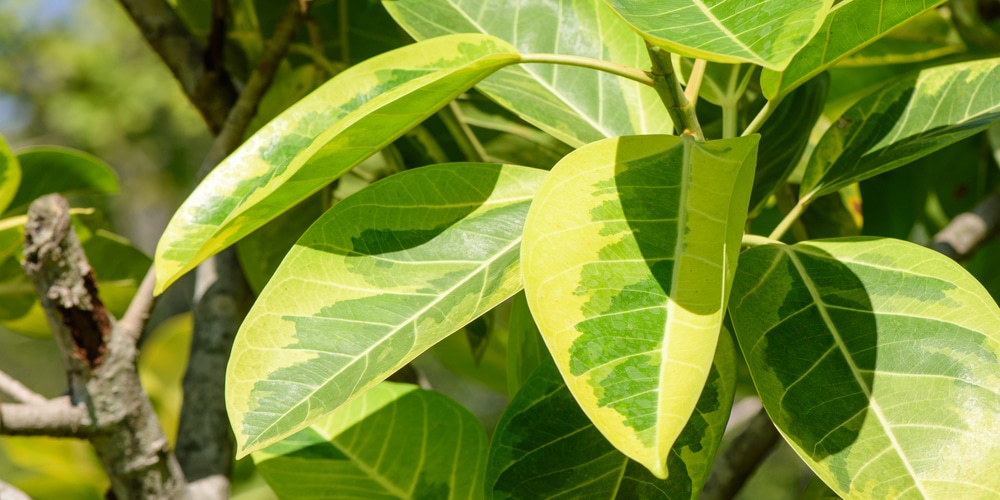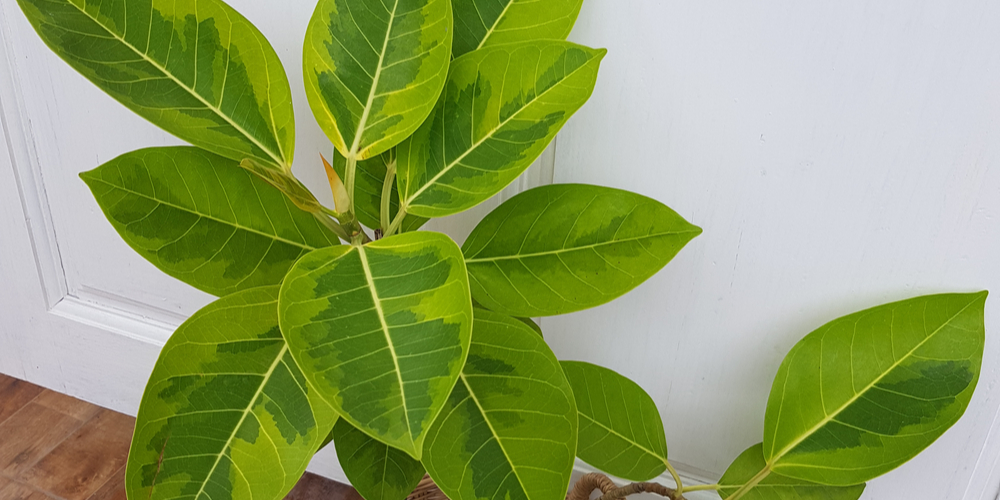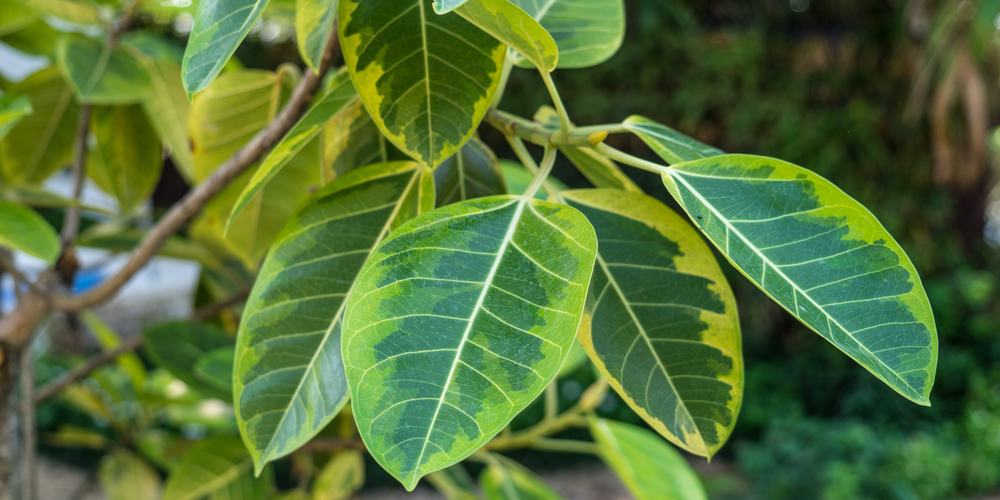Ficus altissima is an evergreen tropical plant that performs excellently as a house plant. If you are looking for something to brighten your interiors, consider getting this species. Its brilliant and variegated leaves are perfect for adding a splash of color to any corner of your home. Plus, if you live in a warm region, you can also plant it as a small tree in your landscape. Don’t expect it to grow big. In nature, this plant can reach about 100 feet in height, but it rarely grows more than 70 inches indoors.
Keep reading to learn more about how to keep a thriving Ficus Altissima!
Ficus Altissima Quick Facts
- Botanical Name: Ficus Altissima
- Common Name: Council tree, or lofty fig
- Plant Type: Perennial
- Flower Color: Blooming is rare indoors. Flowers resemble white, creamy fruits with no fragrance.
- Size When Mature: About 60-70 inches indoors
- Bloom Time: Spring
- Sun Requirements: Bright, Indirect Light
- USDA Hardiness Zones: 9-12
- Soil PH Range: 6.5- 7.0
- Soil Type: Well-draining and rich.
- Water Needs: Medium
- Native Area: South East Asia
What you Need to Know About Ficus Altissima
This plant features variegated bright green leaves with yellow and darker veins. You can grow it as a house plant with virtually no issues, but you must pay attention to recreating its optimal growth environment to have it thriving in your home. Luckily, you’ll find everything you need to know about that in the following sections.
Compared to other varieties of this species, the Altissima isn’t as picky, making it the best alternative for beginner gardens that don’t feel very confident with their skills.
Keep an eye on your pets if you want to plant Ficus Altissima in your house: these plants can be very toxic to your dogs and cats. The severity of the reaction will depend on how much they ingest. But in any case, it is best to prevent your animals from munching on your ficus plants. While it is not as dangerous to humans, it may cause an allergic reaction if consumed. Plus, be careful when pruning it: it can release a slightly toxic white sap that might cause an allergic reaction to your skin.
How to Care for Ficus Altissima
This tropical plant isn’t particularly challenging to grow. By following our tips, you won’t have issues having a thriving ficus in your home.
Light
This plant needs plenty of indirect sunlight to grow. Avoid placing it under the harsh sun rays to prevent its leaves from discoloration and burning. Consider getting some sheer curtains for further protection. If you notice your plant’s leaves are turning brown, you might be exposing your plant to too much sun. Move it to a different location under such circumstances. If the leaves don’t return to their natural color, you might have to increase watering.
Avoid placing your plant in a dark spot, as inadequate lighting will halt its growth and make your ficus look dull.
Water and Soil Needs
Ficus Altissima plants will perform well in standard potting mix, as long as the drainage is good. You can make your own by combining peat moss, sand, and perlite. Doing so will ensure adequate water retention.
Water your ficus regularly, but only do so when the top two inches of your plant feel try. The idea is to leave your ficus to grow in a moist but not soggy environment. Your watering frequency will depend on the indoors’ temperature and humidity. Check your plant once per week to ensure you are meeting its requirements. Don’t forget that these plants are susceptible to overwatering and will show it by turning yellow.
Plant your ficus in a pot with drainage holes to prevent roots from rotting. Most ficus plants are not too picky about pH. Plant your Altissima in a pot with neutral soil for best results.
Temperature Requirements
These plants’ natural environment is the tropical forests of southeast Asia. For this reason, they prefer warm temperatures, which is why they are ideal as houseplants. The optimal conditions range between 60 to 65F. Avoid exposing your plants to temperatures below 60F, as they probably won’t survive. Protect your plant from harsh winds, air conditioners, and fireplaces to avoid causing it too much stress.
Humidity is also crucial with ficus: consider getting a humidifier or set a pebble tray to increase moisture around your plant.
What USDA climate zone can it survive?
Ficus Altissima performs excellently as a house plant. However, you can also plant it outdoors, if you prefer doing so. This plant will only survive in USDA hardiness zones between 9 and 12. And even in those areas, you might have to bring your plant indoors if nighttime temperatures go below 60F.
Fertilizer
Ficus are heavy feeders. Feed them with a balanced liquid fertilizer to boost their growth and ensure they grow lush and dense. However, do not add any product in the winter to avoid damaging your plant’s delicate root system. If you prefer, consider adding organic matter such as manure and compost to increase the soil’s nutrient content with natural products.
Common Diseases
Ficus Altissimas are susceptible to stress: it makes them weaker and less likely to resist an attack from pests or diseases. Avoid moving tour plant too much. Select a location before you bring your plant home. Also, do not overwater your plant: it might cause its roots to rot and attract fungal infections.
Ficus Altissima Propagation
Propagating Ficus Altissima isn’t challenging. If you’d like to add more of these plants around your house (or think that gifting one to your friends might be cute), don’t worry. You can propagate your plant from cuttings and get fast results! Take some healthy four to six-inches long cuttings and place them in moist soil. Water them frequently. In a couple of weeks, your stems will develop roots and be ready to move to a different location.
How to Prune Ficus Altissima
Pruning will keep your Ficus Altissima healthy and maintain an attractive shape. Remove dead and unhealthy-looking lease and shape the canopy as you wish. Cut off unnecessary branches to encourage lush foliage.
For best results, prune your plant in the winter: this will allow your ficus enough time to recover before producing new growth. Don’t forget to use sterile scissors and tools to minimize the spread of diseases.


